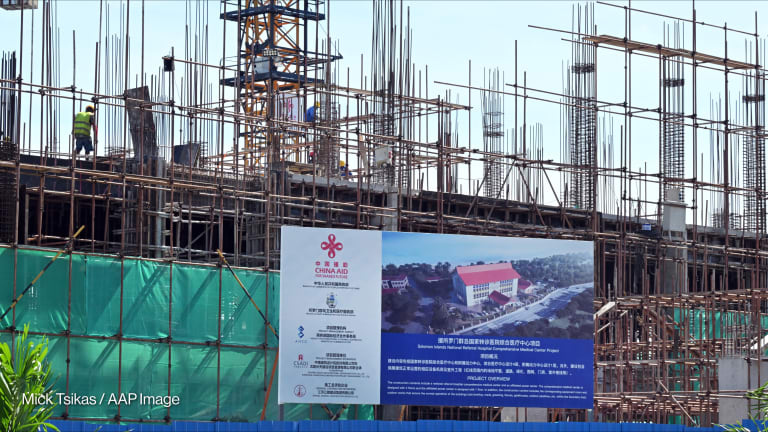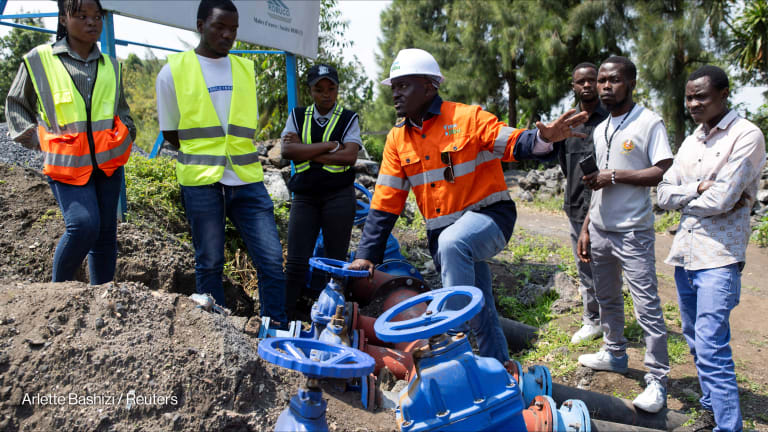How the UN spent $29.6B in 2021
The United Nations spent 32.5% more in 2021 than the previous year. We looked into the organization's Annual Statistical Report to know how the 41 organizations within its system spent that money.
Earlier this month, the United Nations released its Annual Statistical Report for 2021 — a document detailing procurement from 41 organizations within the U.N. system. The total spending amounted to $29.6 billion, up 32.5% from the previous year. The increase is driven by procurements in the health sector, with a single project in Mexico receiving $2.2 billion. Recorded spending for COVID-19 response amounted to $2.1 billion, up by $34 million compared to the previous year. However, the pandemic-related spending did not include the exact amount the World Health Organization and Pan American Health Organization — WHO’s regional office for the Americas — procured due to confidentiality reasons. Overall, five organizations accounted for 70.4% of U.N.’s total procurement volume in 2021: UNICEF, World Food Programme, U.N. Office for Project Services, the U.N. Development Programme; and the U.N. Procurement Division. The U.N. also divided its procurement into 12 thematic sectors. The following five sectors received $22 billion or 74.4% of the total procurement volume: • Health. • Construction, engineering, and science. • Food and farming. • Transportation and storage. • Administration and operations. We dug into the report to see where the U.N. put its money in 2021. Procurement by organization UNICEF maintained its spot as the top spender, with $7.2 billion, or 24.3% of the U.N.’s total procurement volume. The agency’s procurement increased by 60.7%, or $2.7 billion, from the previous year. This is driven by an 88.1% increase in health spending, which amounted to $5.1 billion. WFP ranked next, with $4.9 billion or 16.6% of the U.N.’s total procurement volume. Its procurement increased by $935.6 million or 23.5%. This is due to higher spending on emergency response and food aid and its delivery. WFP is also the top procurer from low-income countries, with $1.6 billion — almost a third of its total procurement volume. UNOPS rose four notches from the previous year, with $3.8 billion or 13% of the U.N.’s total procurement volume. Its spending increased by $2.6 billion, or 201.4% — the biggest among U.N. agencies. This is due to a $2.2 billion worth of medicine the agency procured as part of a $6 billion health agreement between UNOPS and the government of Mexico in 2020. Meanwhile, two new organizations, the International Civil Aviation Organization and World Trade Organization started reporting in the ASR, and have a combined procurement of $63 million. Procurement by sector For the second time since 2011, the bigger portion of U.N.’s spending went to procurement of goods — $17.5 billion, compared to $12.1 billion spent on services. The first time procurement of goods overtook services was in 2020. Health remains the priority, with $10.6 billion — up $5.2 billion, or 94.5% from the previous year. This is the biggest increase among all sectors and represents 36% of the U.N.’s total spending. More than a quarter of total spending went on pharmaceuticals, contraceptives, and vaccines. As mentioned earlier, the increase was due to pandemic-related procurements and a large health sector project in Mexico. The largest procurers for health were UNICEF, UNOPS, and PAHO — accounting for 84.6%, or $9 billion. Construction, engineering, and science also received a significant allocation worth $3.5 billion — $490.4 million, or 16.2%, more than the previous year. A significant portion went to building and maintenance services, engineering and research services, and laboratory and testing equipment. The top procurers include UNICEF, UNDP, and WHO — accounting for 45.1%, or $1.6 billion. Food and farming received nearly $3 billion — $433.9 million, or 17.2%, more than the previous year. The priorities were food and beverage products, live plants and animal products, and farming and fishing equipment. WFP was the top spender, with $2.2 billion, or 74.4%. Top supplier The United States is still the biggest supplier country, with $2.3 billion — a 20.6% increase from the previous year. This represents 7.9% of the U.N.’s total spending. The U.S. is the top supplier of management and administrative services, engineering and research services, and information technology and communications equipment. Mexico ranked next, with $2.3 billion spent primarily on health. It saw the biggest increase among supplier countries — up 1951.3% from the previous year. A health project funded by UNOPS, worth $2.2 billion, drove this increase. China followed, with $1.7 billion. This is driven by a 70.5% increase in procurement from Chinese suppliers. It was the second biggest supplier country for pharmaceuticals, contraceptives, vaccines, and medical equipment and supplies. Overall, the top 10 supplier countries supplied $13.8 billion worth of goods and services — 46.6% of the U.N.’s total procurement volume. Seven are members of the Organisation for Economic Co-operation and Development: the United States, Mexico, Switzerland, Denmark, Belgium, France, and the United Kingdom. All, except Mexico, are part of the Development Assistance Committee. The other non-OECD top supplier countries are China, India, and United Arab Emirates. Procurement from suppliers based in low-income countries has continued to increase. In 2021, it totaled $4.5 billion — a 10.2% increase from the previous year. The top low-income country suppliers were Yemen, with $720.6 million, Ethiopia, with $403.2 million, and Afghanistan, with $350.9 million. Try out Devex Pro Funding today with a free five-day trial, and explore funding opportunities from over 850 sources in addition to our analysis and news content.
Earlier this month, the United Nations released its Annual Statistical Report for 2021 — a document detailing procurement from 41 organizations within the U.N. system.
The total spending amounted to $29.6 billion, up 32.5% from the previous year.
The increase is driven by procurements in the health sector, with a single project in Mexico receiving $2.2 billion.
This story is forDevex Promembers
Unlock this story now with a 15-day free trial of Devex Pro.
With a Devex Pro subscription you'll get access to deeper analysis and exclusive insights from our reporters and analysts.
Start my free trialRequest a group subscription Printing articles to share with others is a breach of our terms and conditions and copyright policy. Please use the sharing options on the left side of the article. Devex Pro members may share up to 10 articles per month using the Pro share tool ( ).
Miguel Tamonan is a Senior Development Analyst at Devex, where he analyzes data from public and private donors to produce content and special reports for Pro and Pro Funding readers. He has a bachelor’s degree in Political Science with a Major in International Relations from the Polytechnic University of the Philippines.








